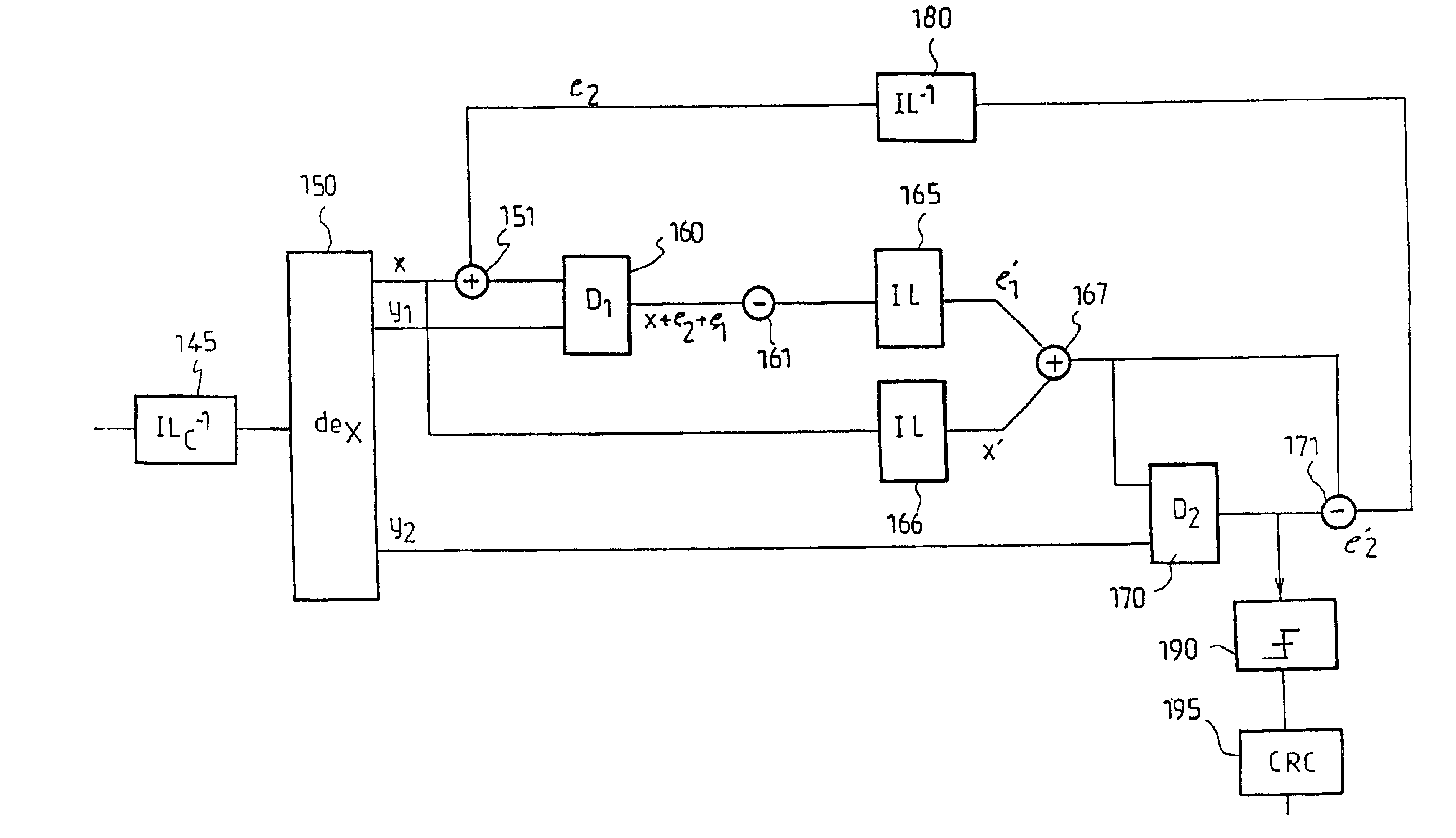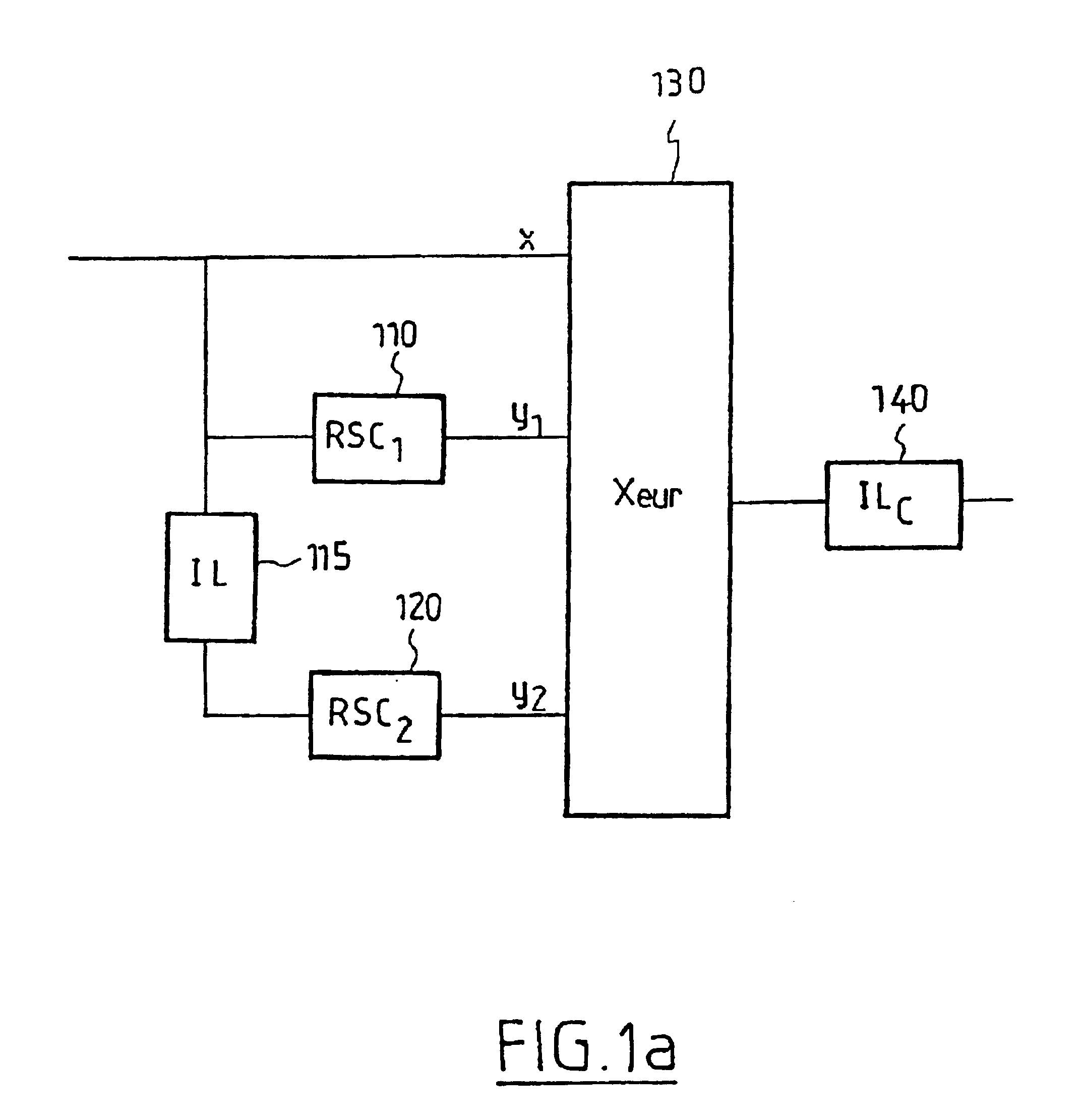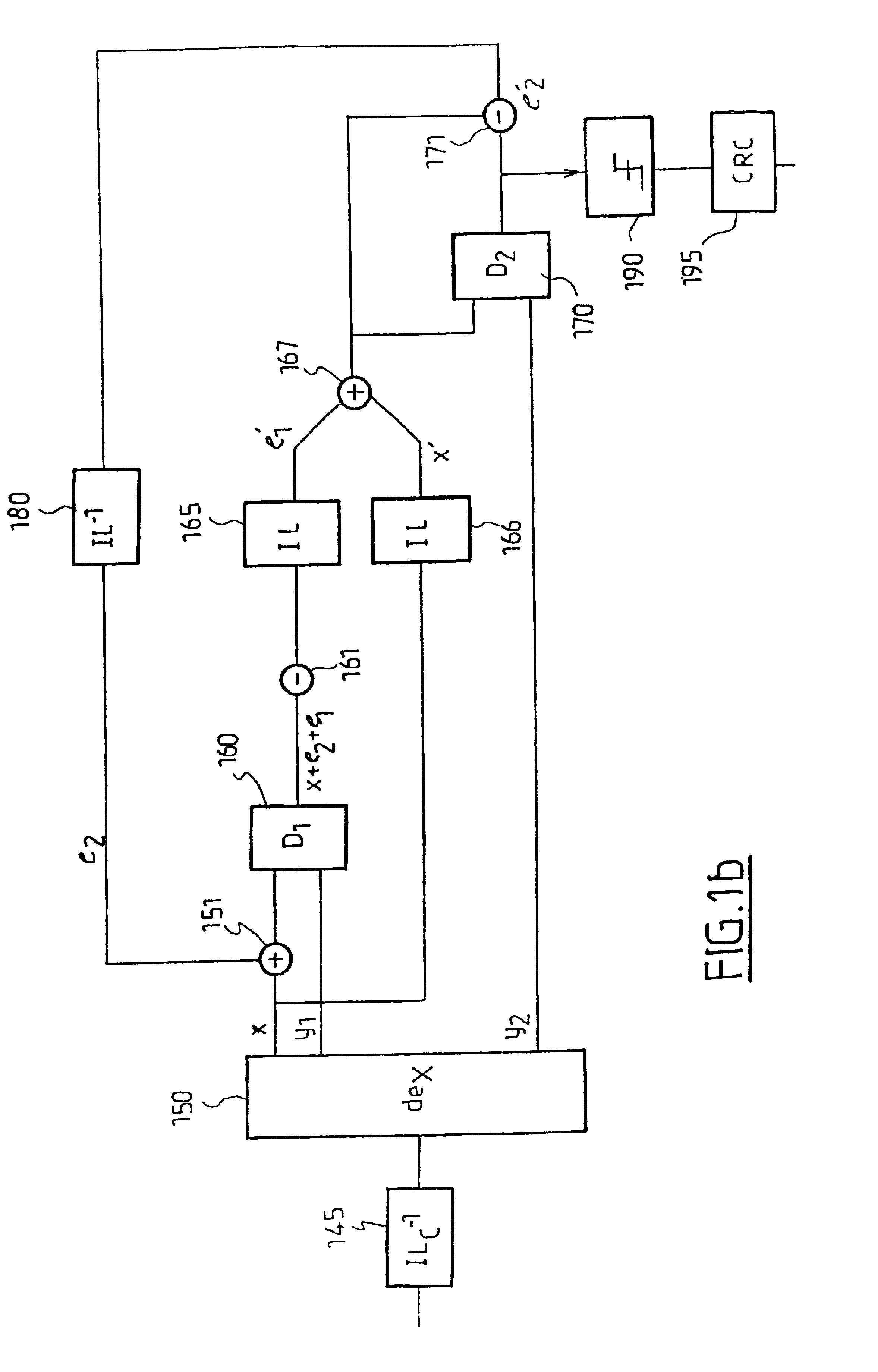Method for the optimization, under resource constraint, of the size of blocks of coded data
- Summary
- Abstract
- Description
- Claims
- Application Information
AI Technical Summary
Benefits of technology
Problems solved by technology
Method used
Image
Examples
first embodiment
[0056]FIG. 8 gives schematically a flow diagram for the method of optimising the block size according to the invention. The transmission depicted at 810 uses an interleaving length N. On reception, there is determined at 820, from N and from an estimation at 821 of the calculation resources and / or the maximum latency time T, the set number of iterations niterations(1) by means of equation (1). Likewise there is determined at 830, from N and the signal to noise ratio C / N, by means of a table 831, the number of iterations nreq required to reach a required level of BET or PET. Next, at 840, niterations(1) and nreq are compared. If niterations(1)≧nreq, the size of the block cannot be divided (since this would, for equal performances, result in an increase in the number of iterations) and the optimisation process is terminated. On the other hand, if niterations(1)req, there are sought at 850, in a table 851, having regard to the signal to noise ratio, all the pairs (N / k, niterations(k)),...
second embodiment
[0061]According to the invention, the process of optimising the size of the block is effected on transmission and the system does not have any return channel between the receiver and the transmitter. The algorithm does not include the estimation of the resources of the receiver but decides, for a given type of application, to improve the error rate (BET, PET) without increasing the latency time of the receiver.
[0062]When the size N of the block has been divided by a factor k, the iterative process can be effected in two possible ways.
[0063]According to a first variant, the 1st decoding iteration is effected for each of the k blocks, and then the 2nd decoding iteration is effected for the blocks with residual errors after the 1st iteration and so on until the maximum number of iterations is reached or better still until the said available resource or the time allotted for the decoding of the k blocks is exhausted. At each pass the blocks having residual errors are identified by means...
PUM
 Login to View More
Login to View More Abstract
Description
Claims
Application Information
 Login to View More
Login to View More - R&D
- Intellectual Property
- Life Sciences
- Materials
- Tech Scout
- Unparalleled Data Quality
- Higher Quality Content
- 60% Fewer Hallucinations
Browse by: Latest US Patents, China's latest patents, Technical Efficacy Thesaurus, Application Domain, Technology Topic, Popular Technical Reports.
© 2025 PatSnap. All rights reserved.Legal|Privacy policy|Modern Slavery Act Transparency Statement|Sitemap|About US| Contact US: help@patsnap.com



